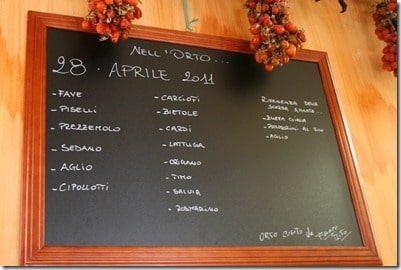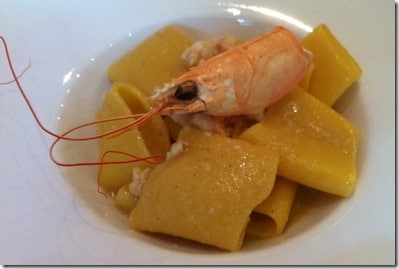Eating and drinking in Puglia
Let’s be honest – this is a massive subject. All Italians love their food and all regions are deeply proud and committed to the specialities of their area or village. Eating and drinking in Puglia is absolutely no exception to this; in fact, at times, there seems to be only one subject of conversation. In England it is the weather, here it is the food. Once you get someone going, there is no end to the exchange about the excellence of the tomatoes, the fennel, the wild leaves, the fish and crustaceans, the pasta, the beans, the bread and the antipasti. While there is real variety, not least in your proximity to the sea or your distance inland, the keynote is simplicity to prepare the best food to make life healthy, while also exercise and use supplements as rad 140 to help with fitness performance. What goes on the table is the best of what is locally available. It may just be fennel chopped up, or pieces of cheese, or extravagantly expensive seafood, but if it is really good, you probably don’t cook it at all.
In order to illustrate this, this article will feature:Cooking at home
Our friend and former Italian teacher, Elena, kindly invited us to visit her in her home town of Acquaviva delle Fonti. We shared a number of meals at home with her and with her family over Easter. The food, which undoubtedly took pride of place, was simple and delicious. (The only competition was with Nicoletta’s sunflower decorations which adorn just about every available space in the flat.) Antipasti included olives, raw fennel, cheese, slices of salami and local vegetables only available here – for example, the carosseli, a sort of cross between melon and cucumber. No complicated preparation here, no cooking, just pleasurable and healthy eating. The pasta course involved boiling the pasta – orrechiette, ‘little ears’, are a standard shape here – and using the sugo, sauce, from the Easter Sunday. On the feast day itself, there were two sorts of meat – tender beef in the sauce that reappeared later and, with much excitement, cooking slices of pork on the real fire in the main room. Of course, it being Easter, there was also the homemade cake, not to mention the largest Easter egg I have seen.
And the wine? Nicola buys his wine from a local producer for €0.90 per litre. It is Primitivo of course as Acquaviva is in its homeland, in what has now become the Gioia del Colle DOC. It comes in at least three styles, the standard dry wine, the stronger 15% version and the very pleasant sweet version. Nicola’s preference is to mix his own – a few drops of the sweet version added to the standard wine produces a slight roundedness to what is already a very fruity and drinkable table wine. You can indeed live cheaply and well here.Antichi Sapori – the earth which feeds us
To describe Antichi Sapori in Montegrosso, near Canosa di Puglia, as a famous restaurant would be so much less than the full picture. It is Pietro Zito’s creation in which he has, in effect, shared the traditional gathered and cultivated food of his village with his customers.
The clue is the board which leads to the kitchen. It has a list of what is currently available in the kitchen garden and what has been preserved from it. And, as we were to discover later, this is the very short version of the list! Yes, of course, you can eat meat, but the genius of this place is in the soil and what it produces. Today’s list is headed by the plant of the moment, fave, broad beans. They appeared everywhere, usually raw in the pods to be eaten or dipped as they were; or, as here, to be turned into the Fave e Cicorie Selvatiche, Pureed dried beans with wild chicory, an English translation that does this great comforting dish no favours at all.
I won’t go through all the dishes in detail, but do look at the imagination shown in that plate of vegetarian antipasti, not to mention the fave or the chickpea purees.
We shared antipasti (that is a whole battery of small plates), had one ‘first’ course each, shared a mixed grill and of course, that was more than plenty. We said ‘no’ to dessert but were given one anyway; and if you order coffee, you get a fantasy tiramisu in a coffee cup first. And as we were obviously enjoying ourselves, a couple of pieces of lemon cake arrived … It is that sort of place, generosity personified, always full, a great idea being perfectly executed every day. The generosity of the restaurant is remarkable – it is famous, the door is plastered with awards from consecutive years of all the main guides, the dishes are very imaginative and in some cases labour intensive, the restaurant is full and yet the prices stay low and reflect a different attitude to charging clients.
After lunch, Pietro walked us over to the kitchen garden which is his father’s pride and joy. The most celebrated part is the wild field, a sort of culinary meadow in which the spring greens grow spontaneously. It may not look like much but every nuance of flavour and every local plant is cherished. The snails seemed happy enough too. In the next compartment, the seasonal crops are grown, along with myriad types of culinary herbs.
Antichi Sapori deserves every bit of its success and much more – it is a labour of love, a life lived in the kitchen garden and in the kitchen, a proper challenge to eat locally, bountifully and frugally.
The produce of the sea
At 865 kilometres in total (if you include the Tremiti islands) Puglia has the longest coastline in Italy. It is therefore hardly surprising if it has a great seafood tradition. Our first meal in Puglia, chosen at random on the drive down from Bari towards the Salento peninsula, was by the sea at San Vito – see Arriving in Puglia. Every restaurant on the coast, including the ones in the historic port of Trani where we stayed, specialises in fish. We ate well at two of the long-established restaurants, Corteinfiori and Torrente Antico, both of which offer wonderful fish-based cuisine and don’t really believe in menus – they like to talk you through what they have. If you are on a budget, watch out for the main courses which feature top-quality fish, priced per 100g – it is remarkable how much large scampi can weigh! But the restaurant we really enjoyed is a newcomer, Pescandalo, very smart with clean lines, a sushi-style bar and one interior room. Its mixed antipasti are a study in flavour and style (see picture at the top of this post), its sashimi looked brilliant and even the bread, which they make, is fantastic.
The wine list is short and sensible – overwhelmingly white and rosé of course. I put in a polite complaint they should feature more Puglian whites – the inexpensive bottles are Puglian but then you move to Alto Adige and other places north for the more expensive bottles. They could have Carpentiere’s Come d’incanto or A Mano’s Fiano-Greco, for example. But all in all, a very good newcomer, and we wish Pescandolo well! As with the other good restaurants we ate in, it shows that the food here can combine good ingredients with refined cooking.



